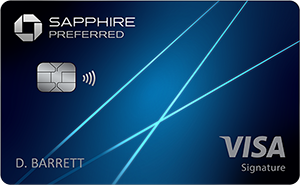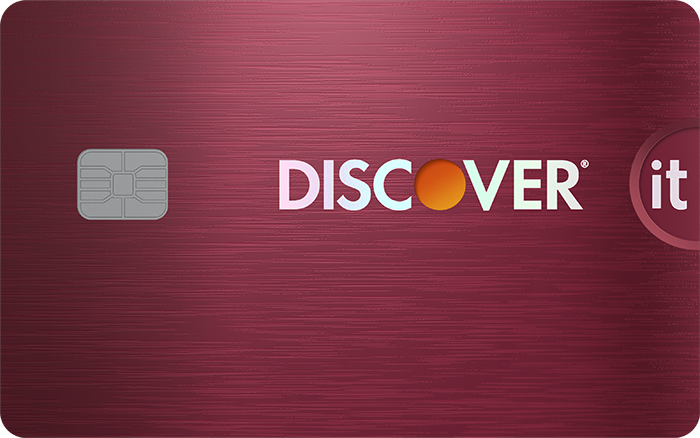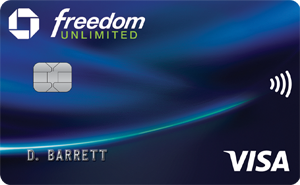One of the most common questions young adults ask about credit is: What does your credit score start at? In other words, when you first turn 18 and have no credit cards or other debt, what is your credit score?
Personal finance education isn't universally taught in the U.S., and as a result, many people understand little about credit scores and building credit. Read on to better understand how credit scores are assigned to new credit users.
It's a trick question
At face value, "What does your credit score start at?" can be a trick question. Turns out, you don't actually start with a credit score at all. You're born outside the system. Even when you turn 18, you aren't automatically assigned a credit score.
According to the common FICO credit scoring method, you need to meet some basic requirements to be eligible for a credit score. Until you meet these requirements, you won't need to wonder about "What does your credit score start at?" -- because you have no score at all and are considered credit invisible.
To receive a FICO® Score, you need at least one credit account open for six months or more, plus a credit account that has been reported to a credit bureau within the past six months. You can have more than one account open.
So, what does your credit score start at, once you qualify for one? The FICO® Score ranges from a minimum of 300 to a maximum of 850. But you don't start out with a 300 and work your way up. Instead, your score is calculated using a proprietary formula created by FICO.
TIP
Check credit score requirements before applying for a credit card. Some credit cards only approve people with excellent credit. Others are made especially for people with low or no credit. Here are our favorite credit cards organized by credit score requirements:
- Below 580: Best cards for poor credit
- 580-669: Best cards for fair credit
- 670-739: Best cards for good credit
- 740 or higher: Best cards for excellent credit
What makes up your FICO® Score?
There are five categories used to calculate your FICO® Score, each with its own weight in the formula. Your starting credit score depends on your credit behavior in each of the following categories:
- Payment history (35%)
- Amounts owed (30%)
- Credit history length (15%)
- New credit (10%)
- Credit mix (10%)
Payment history
Payment history has the biggest impact on your credit score. On-time payments keep your score high. But a single late payment can drop your credit score dramatically. If you've never missed a payment before, your score could drop by 100 points or more. To earn a high starting score, pay all your outstanding credit bills monthly.
Amounts owed
Your monthly credit balance is almost as important as your payment history. Keeping your balance low keeps your credit score high. But racking up debt -- even if you make timely minimum payments -- can drop your credit score. To earn a high starting score, keep your credit utilization ratio below 30%. In other words, try to pay off your credit card entirely every month.
Credit history length
Since you're just starting out, you are immediately penalized for having a short credit history. This makes it impossible to begin with a perfect score. Don't worry, though. Your score will naturally improve as you prove to FICO that you can establish a strong credit history. (Your "credit history length" is the average of all your accounts.)
New credit
Each time you apply for a new credit card or a loan, your lender performs a hard credit check. One or two is okay, but too many signals to lenders that you are about to take on a bunch of debt. Lenders don't like that. To earn a high starting score, keep your credit cards and loans to one or two. Take your time opening new lines of credit. If possible, spread them out.
Credit mix
You will probably be penalized for having a poor credit mix. Basically, lenders like to see that you can handle a bunch of different credit lines. It shows responsibility. Ideally, you'd have a mix of revolving credit lines (credit cards) and installment loans (mortgages, auto loans, personal loans, etc.). Don't worry about this yet. It has a relatively low impact on your score.
Because FICO calculates credit scores behind the scenes, and there's a lot involved, it's impossible to know exactly what your credit score will start at. For instance, even if you have a perfect payment history, you may start out with average or "fair" credit because you have limited credit history or a poor credit mix.
Don't worry too much. Unless you make some big mistakes in your first six months, you're unlikely to start with a flat-out bad credit score. Start with a high score by making timely payments and keeping usage to a minimum. There are many ways to establish your credit score.
Bottom line: Your starting credit score will be generated after you've established a credit history, and you can apply for a credit card (and get approved) without a score. Keep your account in good condition to pay less for cars, homes, and anything you purchase with borrowed money.
Credit card comparison
We recommend comparing options to ensure the card you're selecting is the best fit for you. To make your search easier, here's a short list of standout credit cards.
| Offer | Our Rating | Welcome Offer | Rewards Program | APR | Learn More |
|---|---|---|---|---|---|
|
Rating image, 5.00 out of 5 stars.
5.00/5
Our ratings are based on a 5 star scale.
5 stars equals Best.
4 stars equals Excellent.
3 stars equals Good.
2 stars equals Fair.
1 star equals Poor.
We want your money to work harder for you. Which is why our ratings are biased toward offers that deliver versatility while cutting out-of-pocket costs.
|
Discover will match all the cash back you’ve earned at the end of your first year. N/A | 1% - 5% Cashback Earn 5% cash back on everyday purchases at different places you shop each quarter like grocery stores, restaurants, gas stations, and more, up to the quarterly maximum when you activate. Plus, earn unlimited 1% cash back on all other purchases—automatically. |
Intro: Purchases: 0%, 15 months Balance Transfers: 0%, 15 months Regular: 17.24% - 28.24% Variable APR |
||
|
Rating image, 5.00 out of 5 stars.
5.00/5
Our ratings are based on a 5 star scale.
5 stars equals Best.
4 stars equals Excellent.
3 stars equals Good.
2 stars equals Fair.
1 star equals Poor.
We want your money to work harder for you. Which is why our ratings are biased toward offers that deliver versatility while cutting out-of-pocket costs.
|
Up to $300 cash back Earn an extra 1.5% on everything you buy (on up to $20,000 spent in the first year) — worth up to $300 cash back. That's 6.5% on travel purchased through Chase Travel, 4.5% on dining and drugstores, and 3% on all other purchases. | 1.5% - 5% cash back Enjoy 5% cash back on travel purchased through Chase Travel, our premier rewards program that lets you redeem rewards for cash back, travel, gift cards and more; 3% cash back on drugstore purchases and dining at restaurants, including takeout and eligible delivery service, and 1.5% on all other purchases |
Intro: 0% Intro APR on Purchases and Balance Transfers for 15 months Purchases: 0% Intro APR on Purchases, 15 months Balance Transfers: 0% Intro APR on Balance Transfers, 15 months Regular: 20.49% - 29.24% Variable |
Apply Now for Chase Freedom Unlimited®
On Chase's Secure Website. |
|

Apply Now for Chase Sapphire Preferred® Card
On Chase's Secure Website. |
Rating image, 4.50 out of 5 stars.
4.50/5
Our ratings are based on a 5 star scale.
5 stars equals Best.
4 stars equals Excellent.
3 stars equals Good.
2 stars equals Fair.
1 star equals Poor.
We want your money to work harder for you. Which is why our ratings are biased toward offers that deliver versatility while cutting out-of-pocket costs.
|
60,000 bonus points Earn 60,000 bonus points after you spend $4,000 on purchases in the first 3 months from account opening. That's $750 when you redeem through Chase Travel℠. | 5x on travel purchased through Chase Travel℠, 3x on dining and 2x on all other travel purchases Enjoy benefits such as 5x on travel purchased through Chase Travel℠, 3x on dining, select streaming services and online groceries, 2x on all other travel purchases, 1x on all other purchases, $50 Annual Chase Travel Hotel Credit, plus more. |
Intro: N/A Purchases: N/A Balance Transfers: N/A Regular: 21.49%-28.49% Variable |
Apply Now for Chase Sapphire Preferred® Card
On Chase's Secure Website. |
Still have questions?
Here are some other questions we've answered:
FAQs
-
Credit.com estimates the range to be 500-700 for most consumers.
-
Credit providers often bundle statements with credit score reports. You may be able to find your score by logging into your credit provider portal.
-
You can request to become an authorized user on a family member's credit card. This will let you use their card and build your credit a bit. You can also apply for a secured credit card, which is easy to be approved for because it requires you to put up cash as collateral and serve as your credit limit.
Our Credit Cards Experts
We're firm believers in the Golden Rule, which is why editorial opinions are ours alone and have not been previously reviewed, approved, or endorsed by included advertisers. The Ascent does not cover all offers on the market. Editorial content from The Ascent is separate from The Motley Fool editorial content and is created by a different analyst team.

